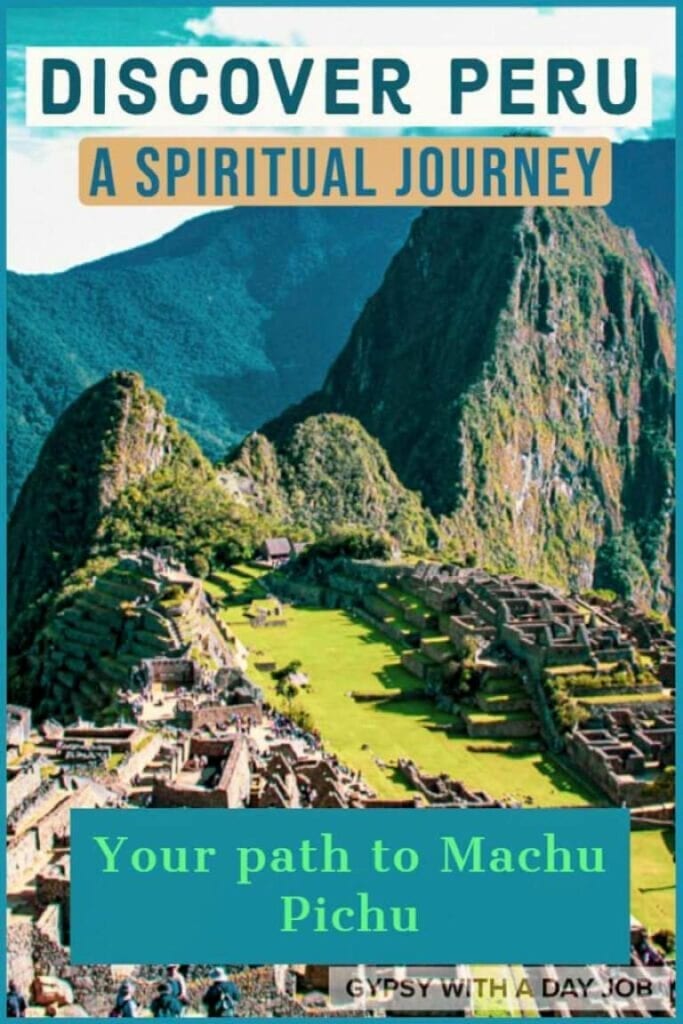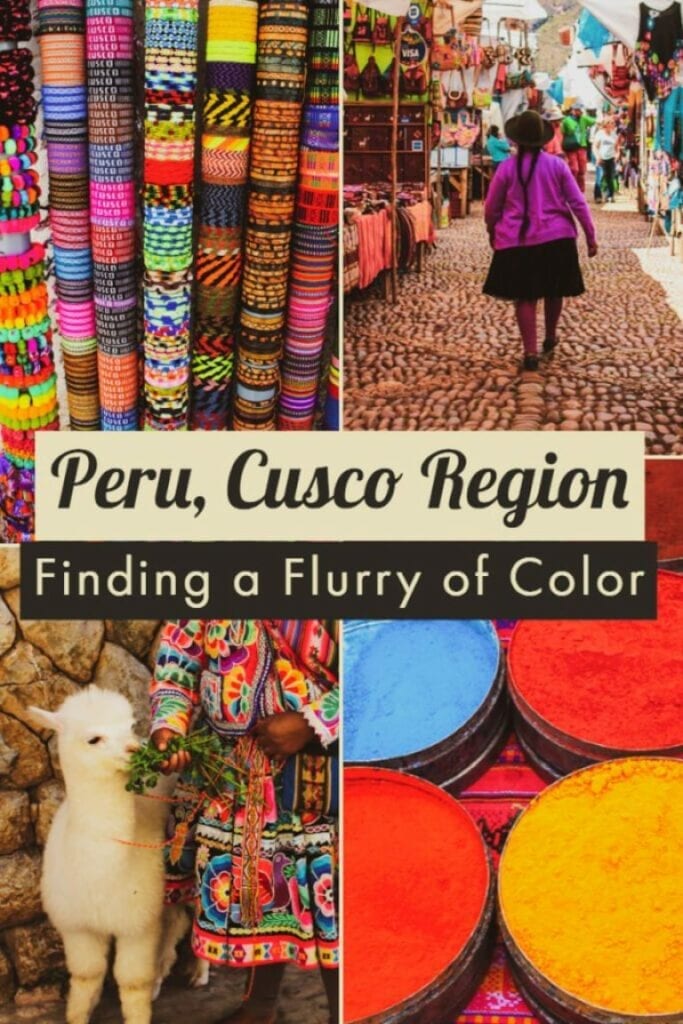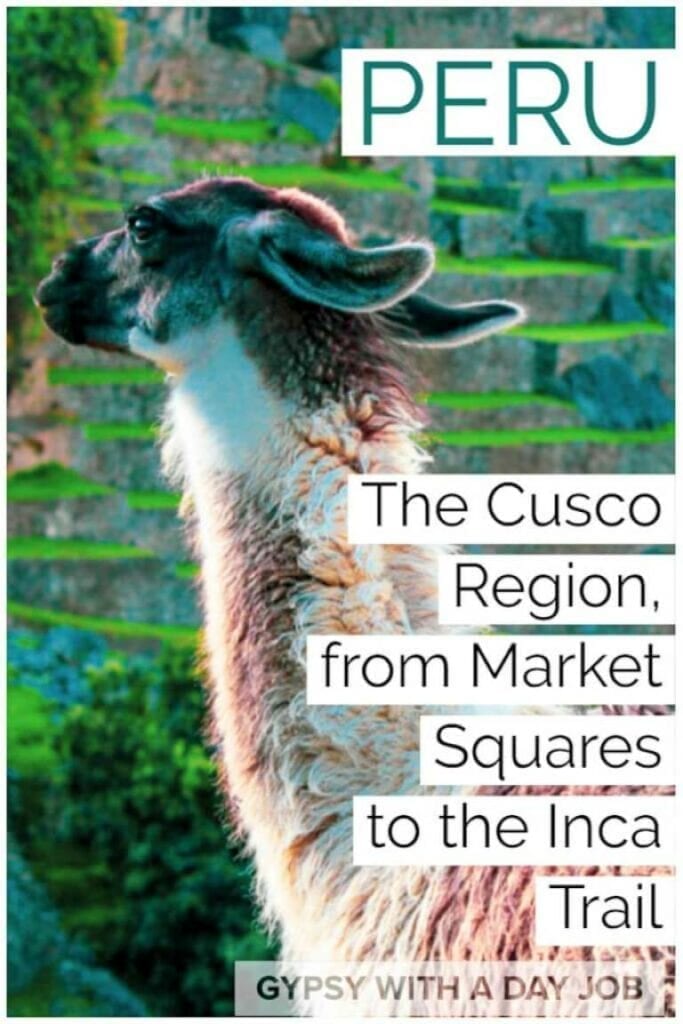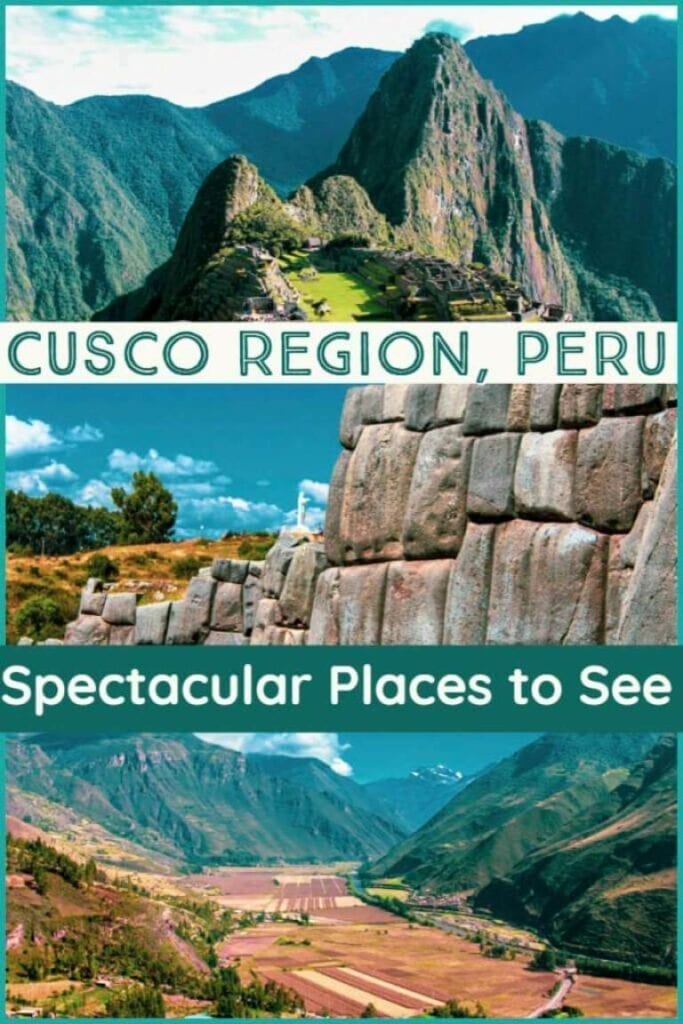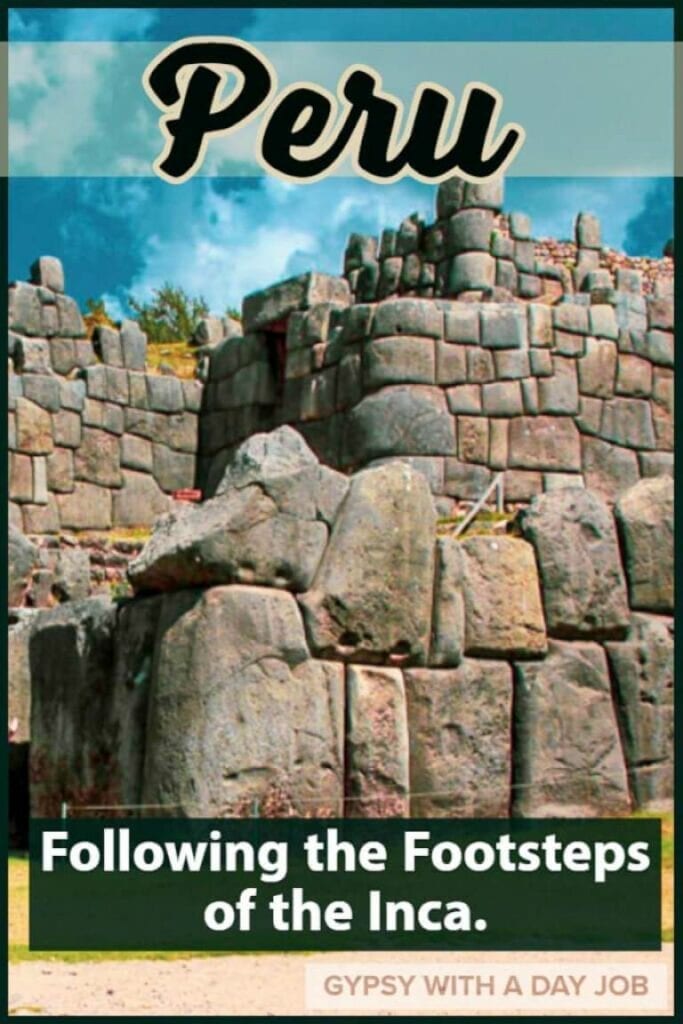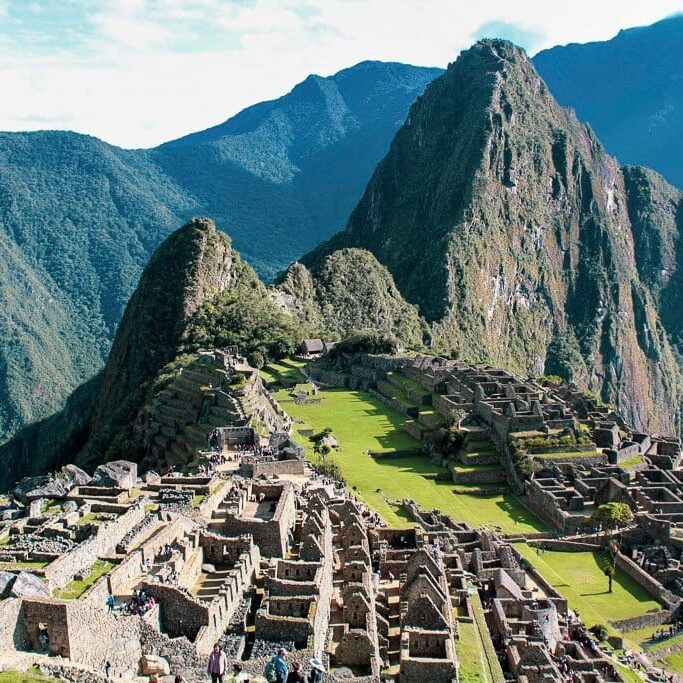In a world full of wonders waiting to be discovered, Machu Pichu has long been one of the top 5 most desired destinations around the world. For some people, it is a spiritual quest which draws them to Machu Pichu, a hope of discovering something more. For others, it is the echoing mystery of a once powerful culture, that is no more. But, there is so much more to the Cusco Region of Peru that begs attention. A vacation week, 7 days in Peru, will only scratch the surface of all the things to do in Cusco Region, and places to see in the Sacred Valley.
While this week in Peru is not nearly enough, if it is all you have, it is still enough to have an experience that is enlightening and educational, and one that will stay with you forever. It will take you along the streets of Cusco; and places to see in the Sacred Valley: Pisac, Ollantaytambo, Chinchero, Maras. Then of course, on to Aguas Caliente, and the road to Machu Pichu. The sacred city of the Inca, Machu Pichu, and the Sacred Valley, abound with stunning and intriguing remnants of the Incan empire. The spirit of what once was permeates the air, but it lies behind a more vibrant and colorful spirit of what has become!
Recently I decided to check it off of my own bucket list. And better still, Great Escape Publishing offered a Photography Expedition to my dream place. My name is Janie Pace and yes, my husband Ronnie agreed to travel with me (he’s not fond of flying, and he has moderate COPD.) With our Canon T6 cameras in hand, we were off.

I have put this story together to share what you can expect during a week in Peru, in the Cusco Region. For us, an expedition was the way to go, and there are several companies offering guided tours. However, I have put it together in a manner that those who wish to replicate such a journey on their own can do so, with things to do in Cusco, as well as places to see in the Sacred Valley, and some tips, including places to stay and places to eat. You can line up your 7 days in Peru completely on your own if you choose!
This Week in Peru, Cusco Region Guide includes:
- Where to Stay in Cusco
- Things to Do in Cusco
- Places to See in the Sacred Valley – on the Road to Machu Pichu
- Pisac
- Ollantaytambo
- Machu Pichu
- Places to see in the Sacred Valley – Day Trips from Cusco
- Chinchero
- Maras Salt Mines
- More About Peru and Incan Culture – the Quecha Language
If you are ready to start planning your adventure in Peru, and experience Machu Pichu, I am ready to tell you about our 7 days in Peru!
Where to Stay in Cusco
JW Marriott El Convento Hotel, Cusco, Peru
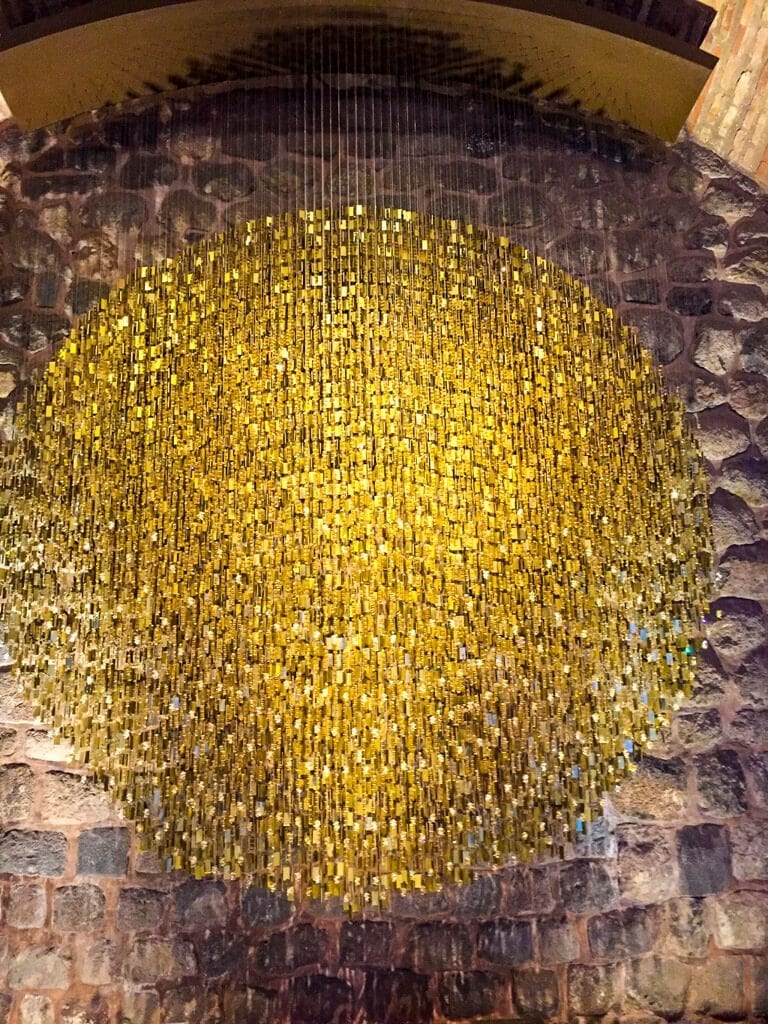
Mesmerized by the golden contemporary Swarovski design at the entrance, a work of art representing the INTI, the Sun God in Inca Culture, we were greeted by our host at the luxury five-star JW Marriott El Convento Hotel on San Augustin Street near the Plaza de Armas in Cusco, Peru.

As we sipped coca tea, a local remedy to ease the high-altitude dizziness, we were surrounded by ancient remains of the Inca and Colonial periods representing the Cultural Heritage of Peru. Was it the effects of the coca tea, the thin air, lack of sleep, or was it a spiritual connection that slowly consumed me. There is so much more about this Peruvian Inca culture to explore in the days to come, remembering a college art history course where I studied the Inca culture, art, and the mystery of their so-called disappearance.
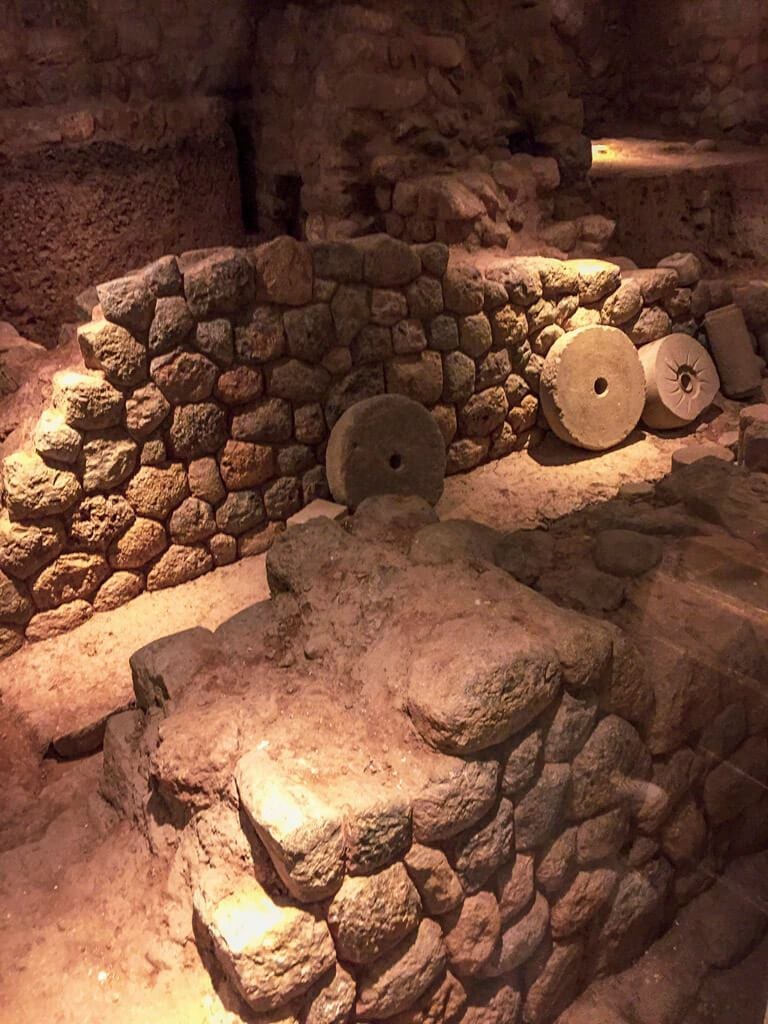
Our host reminded us of the 6 pm historical tour of the hotel, housed in the Colonial Convent of San Augustin, and originally constructed in the XVI Century over Inca stone ruins. Inca discoveries unearthed during the excavation are on display in the basement area.
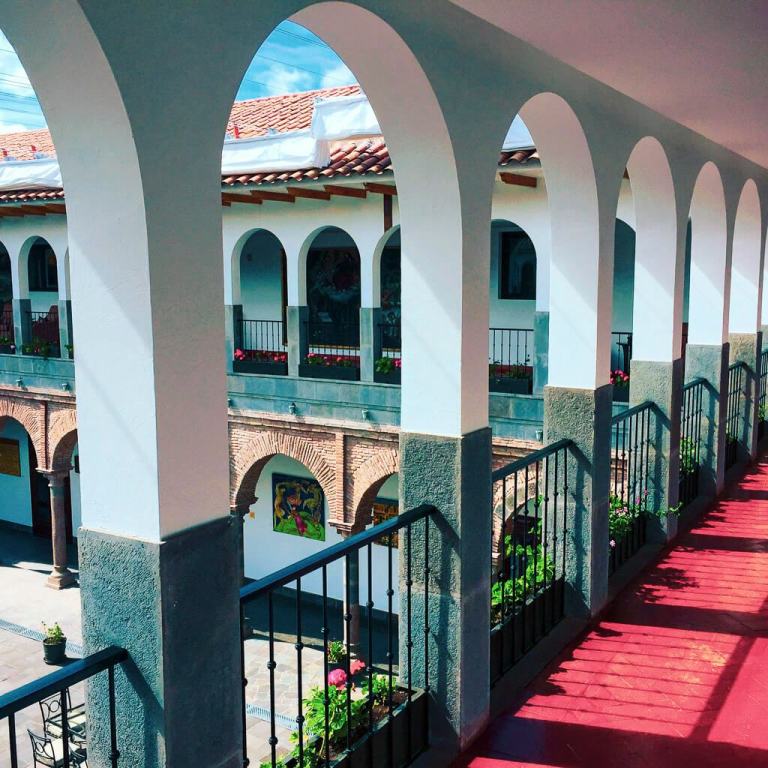
At an altitude of 11,200 feet, we had reserved a pre-tour deluxe room with oxygen enrichment at this historic luxury hotel with a terrace and courtyard view of the colonial arches. Our room, equipped with luxury bedding, marble bathrooms, separate shower, and tub, had luxurious linens, I-docks, all the amenities, make-up mirror, comfy bathrobes, slippers, and more.
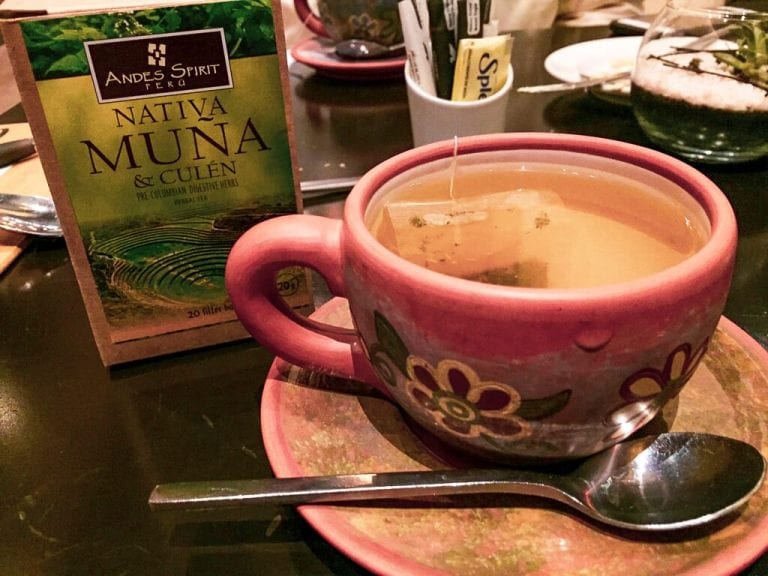
The service at this grand hotel made me feel like an Inca Empress; each of the staff goes out of their way to greet you and add a special touch or courtesy to your experience. It is a perfect home base for 7 days in Peru, or more!
You can reserve a room at the JW Marriott El Convento Hotel now!
The Spa
The JW Marriott Cusco Spa offers exclusive therapies inspired by the Inca calendar. The Magnificent Festival, a body treatment fashioned after the festival of worship of the god Viracocha, includes wrapping in gold, the Uchuy Pokoy, taken from the celebration for the cultivation of corn and offering a delicate facial massage. Enjoy treatments based on deep cleansing of the skin using gold, chocolate, Andean mud, and diamond dust called an Anta Situwai Massage and a Coya Raymi.
Pirqa Restaurant
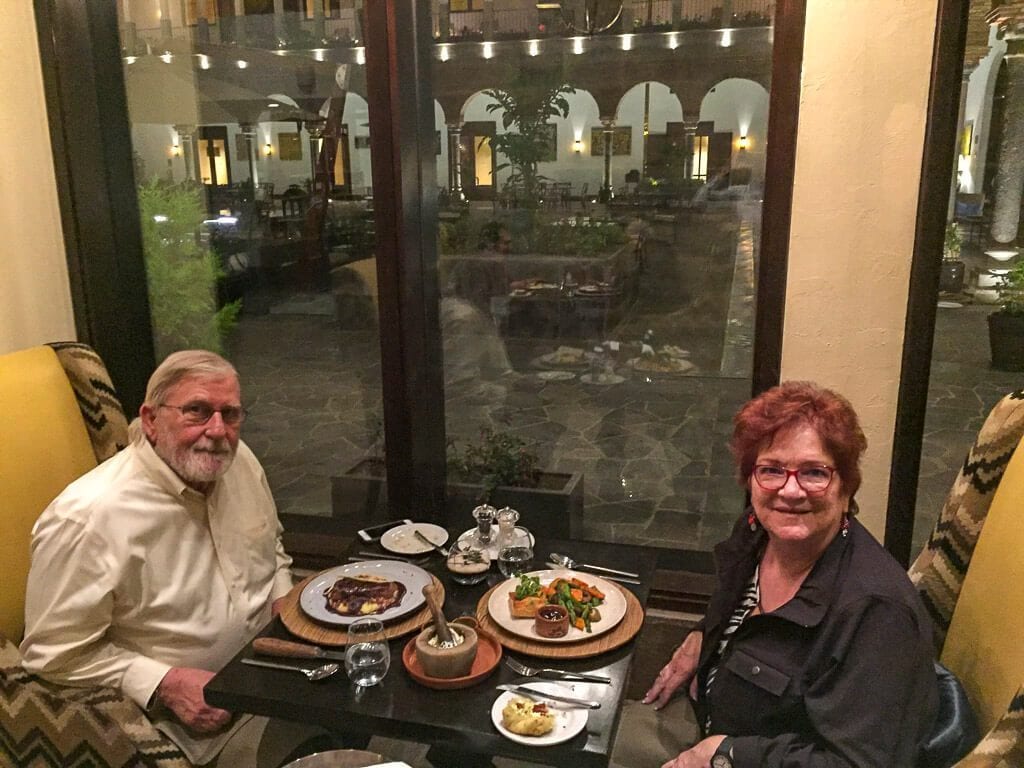
Named as a reference to the wall of the Church of the Convent of San Augustin, the Pirqa Restaurant offers creative main courses featuring a variety of meats, including alpaca. Peruvian cuisine takes a culture to table approach with native potatoes, quinoa, fresh vegetables, and innovative desserts.
Begin with the Local Trout Causa with yellow potatoes, avocado, and tomato-onion salsa, then select the Quinoa Salad, the best I’ve had, prepared with sorrel leaves, avocado, mango with citrus vinaigrette. For your main course, indulge in the Local Elderberry & Rosemary Glazed Salmon with roasted baby native potatoes and sautéed seasonal vegetables. For dessert, choose the chocolate mousse, coffee ice cream, and chocolate crumble or have moraya (potato) cheesecake, chocolate crumbles, and sorbet with the dehydrated carrot.
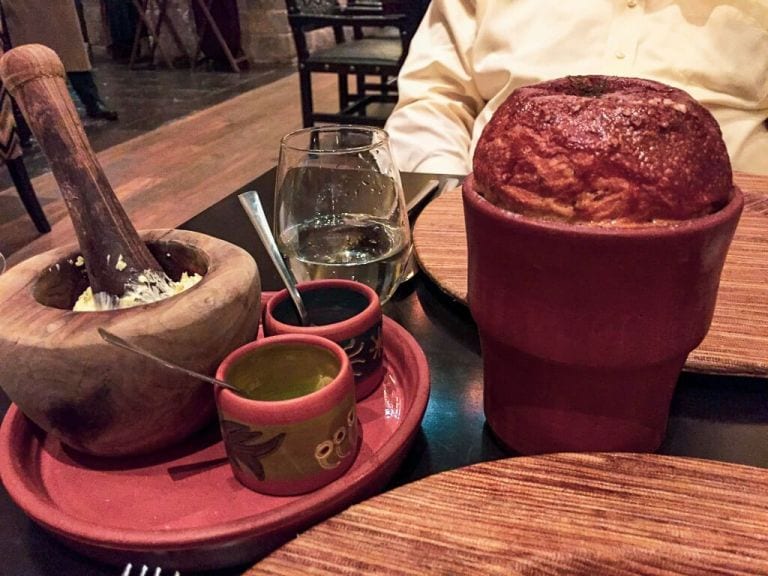
Peruvian Cuisine has evolved around ancestry, history, culture, and spiritual connection to the Pachamama (Mother Earth). All these things and more are what have inspired the cuisine at Pirqa Restaurant. Transforming top-quality ingredients from our earth into original creations, Pirqa offers a cultural exploration of the senses.
Qespi Bar

In the cozy Qespi Bar, enjoy the famous Pisco Sour, Cusquena beer, and other Andean cocktails with savory snacks and appetizers inspired by local cuisine. The Qespi Bar, named for something iced, has become a city-wide meeting place.
Things to Do in Cusco
The Plaza de Armas
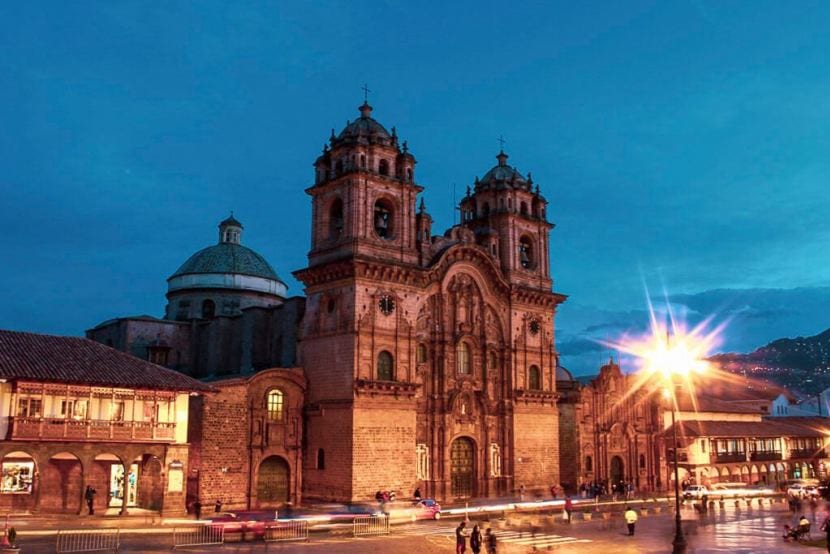
The Plaza de Armas was the nerve center and religious site of Cusco during the Inca Empire. Today this is the beautiful main square with a fountain, a variety of restaurants, shopping, street vendors, and historical buildings like the Cathedral de Cusco, with Renaissance façade and Baroque interior.

The Spanish conquered the Incas in 1532 and were determined to abolish Inca traditions and religious beliefs. A statue in the center of the square, built on old Inca ruins, honors Jose Gabriel Tupac Amaru, who led a late 18th-century revolt against the Spanish colonists. His execution took place in the plaza in 1781. He remains a mythical figure in the Peruvian struggle for independence. You can reflect on the history and former glory of the Inca Empire and gain a deeper understanding of what makes Cusco so important today.
Qorikancha or Temple of the Sun
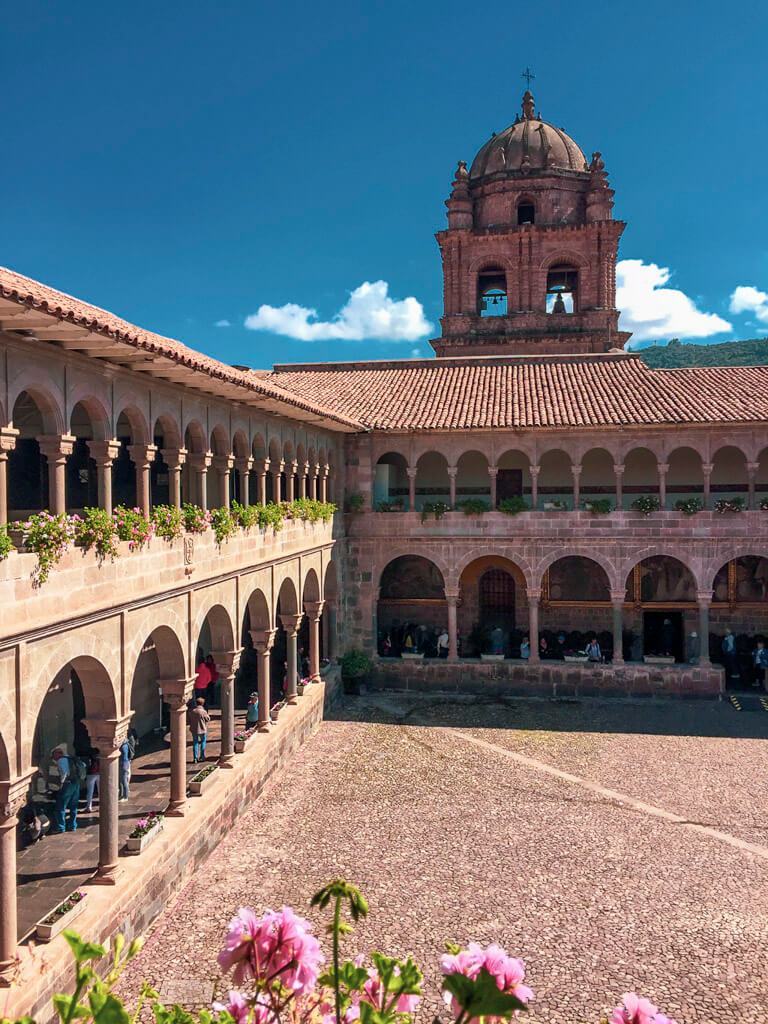
The Qorikancha or Temple of the Sun was one of the most revered Inca Temples. Later the Spanish constructed the Santo Domingo Convent on its ruins. The Incas intriguing construction methods used massive blocks of stone stacked and precisely cut.
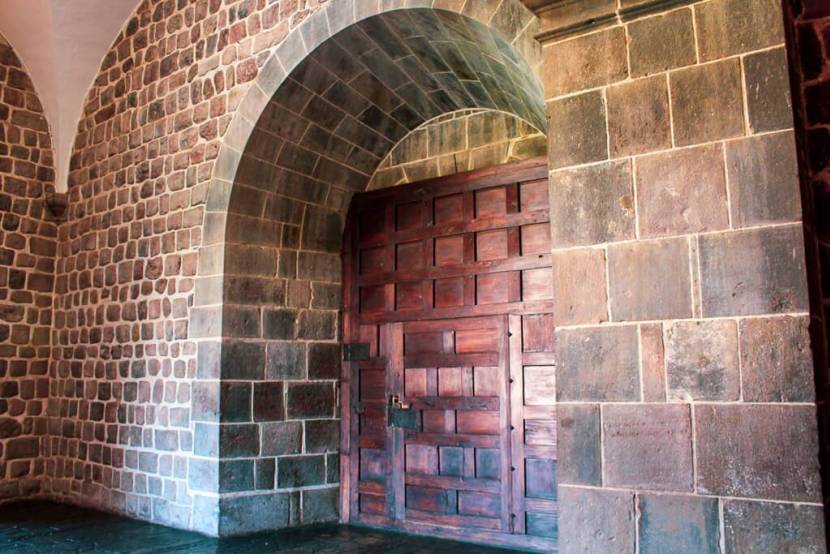
The interior Inca walls, covered with large gold planks, were looted by the Spanish conquerors. Dedicated to the creator god Viracocha, the moon goddess Quilla and Inti, the god of the sun, the sacred site, or huaca was known as the Golden Enclosure. Qorikancha was the tail of the jaguar.
Sacsayhuaman

A House of the Sun citadel built on the outskirts of the ancient capital of Cusco, Sacsayhuaman (sounds like sexy woman), rests on an artificially leveled mountaintop and consists of three gigantic terraced walls, surrounding a paved area containing a circular stone structure believed to be a solar calendar. These walls represent the teeth of the jaguar. The original city of Cusco was said to have been in the shape of a jaguar.
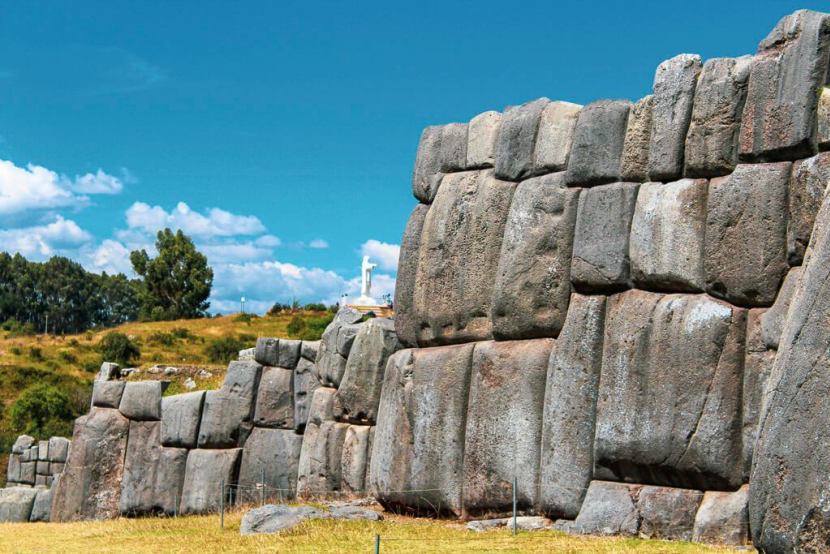
The gargantuan stone blocks at Sacsayhuaman, some of which are over 28 feet high, are estimated to weigh over 128 tons. A thin thickness gauge could not fit between the precisely placed blocks. The term Sacsayhuaman in Quechua means “the place where the hawk is satiated.”
The mystery of the underground tunnels and caves in Sacsayhuaman are said to connect to Qorikancha. These chincanas or tunnels in the Quechua language, meaning “a place to get lost,” are currently closed, at least that’s what they say.
The Narrow Streets of Cusco

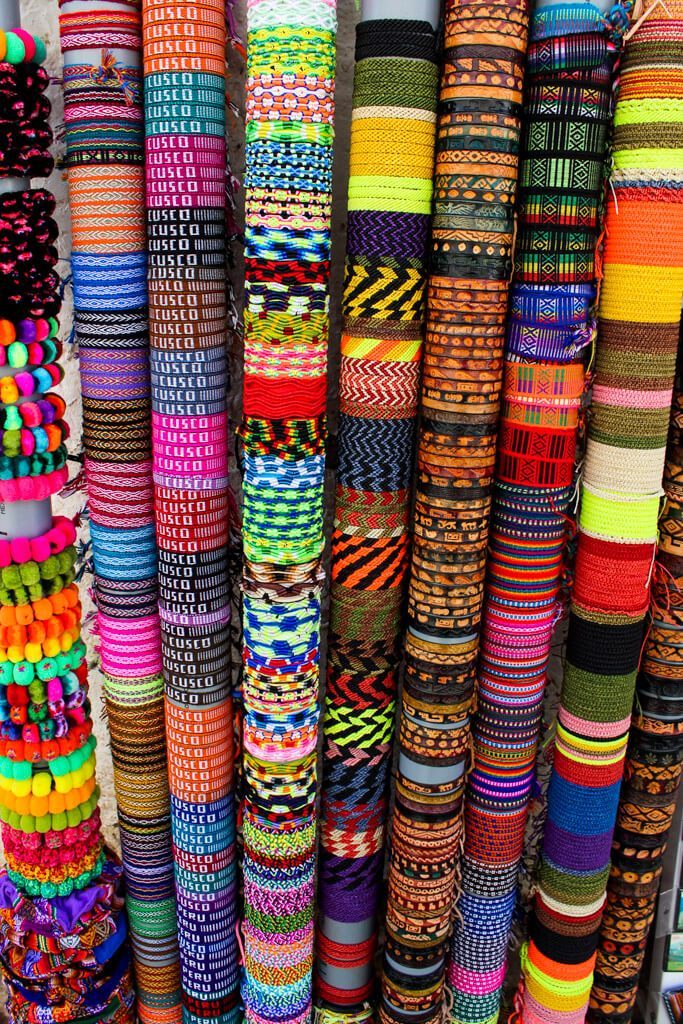
Walk the narrow streets of Cusco and find brightly colored textiles, carved wooden doors, and wooden balconies painted in bright colors.
The Twelve-Angled Stone

Visit the twelve-angle stone located in Calle Hatum Rumiyoc, a representative example of Inca architecture. Can you count all twelve angles?
The Pre-Columbian Art Museum
The Pre-Columbian Art Museum, located in the Casa Cabrera, a mansion-turned-convent built in 1580, includes over 450 artifacts that date back to 1250 B.C.
Casa Concha Museum
Casa Concha Museum, Property of the San Antonio Abad University, one of the oldest universities in Peru dating back to 1692, houses archaeological objects found by Hiram Bingham at Machu Picchu.
The Archbishop’s Palace Museum
The Archbishop’s Palace Museum, built on the foundations of the Inca Roca Palace, features a collection of 17th-century paintings.
Cusco Craft Center
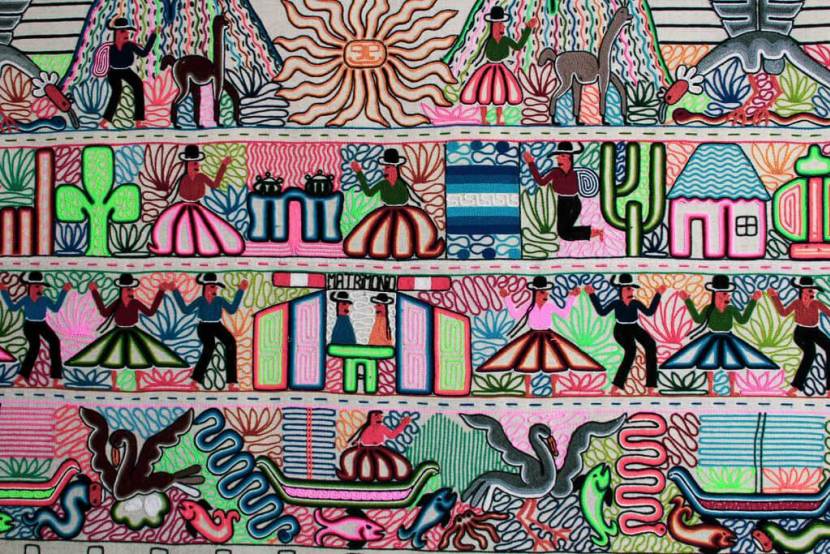
Cusco Craft Center, located in Avenida El Sol, is the perfect place to purchase alpaca handicrafts, alpaca clothing, textiles, the chullo hat, and more.
Places to See in the Sacred Valley – Days 3-4
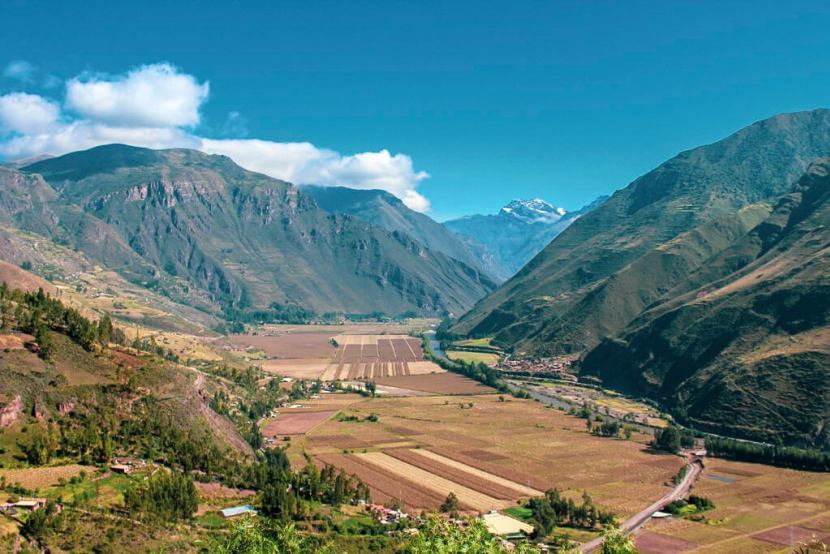
Drive north about an hour to Pisac in the Sacred Valley, a rich agricultural area dotted with Inca ruins. A great place to acclimatize to the altitude in Cusco, the valley’s lower elevation gives time for the body to adjust. I saw farmers returning home after a day of work in the fields carrying foot plows similar to those used by their Inca ancestors.
At 12,000 feet elevation, the Inca families honor the land and raise potatoes and grain in carefully laid out small fields that inspire weaving patterns.
Pisac
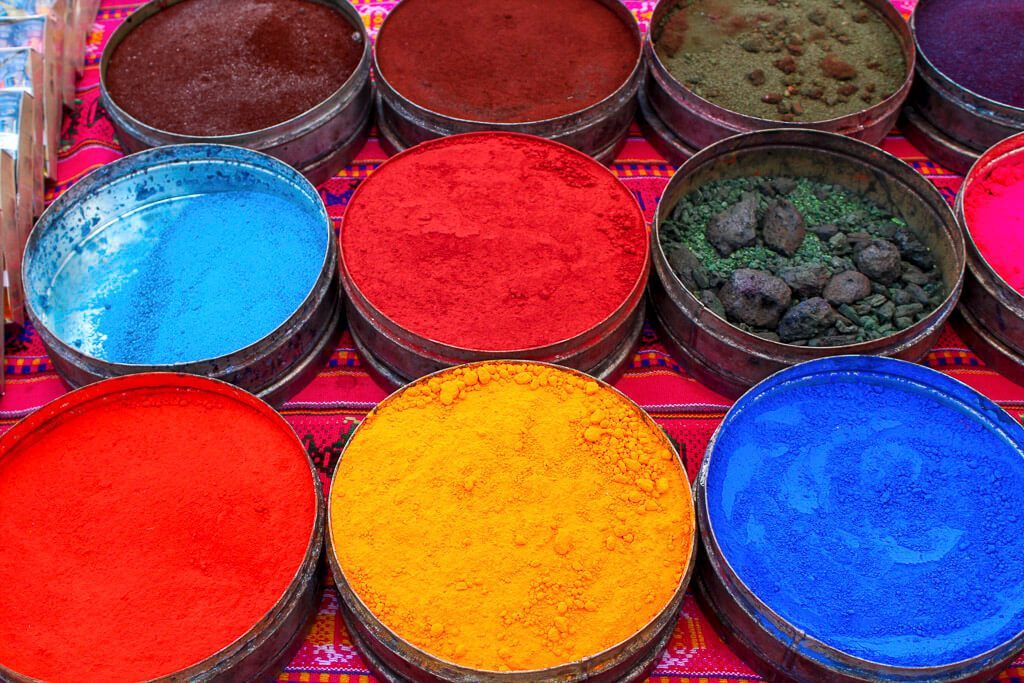
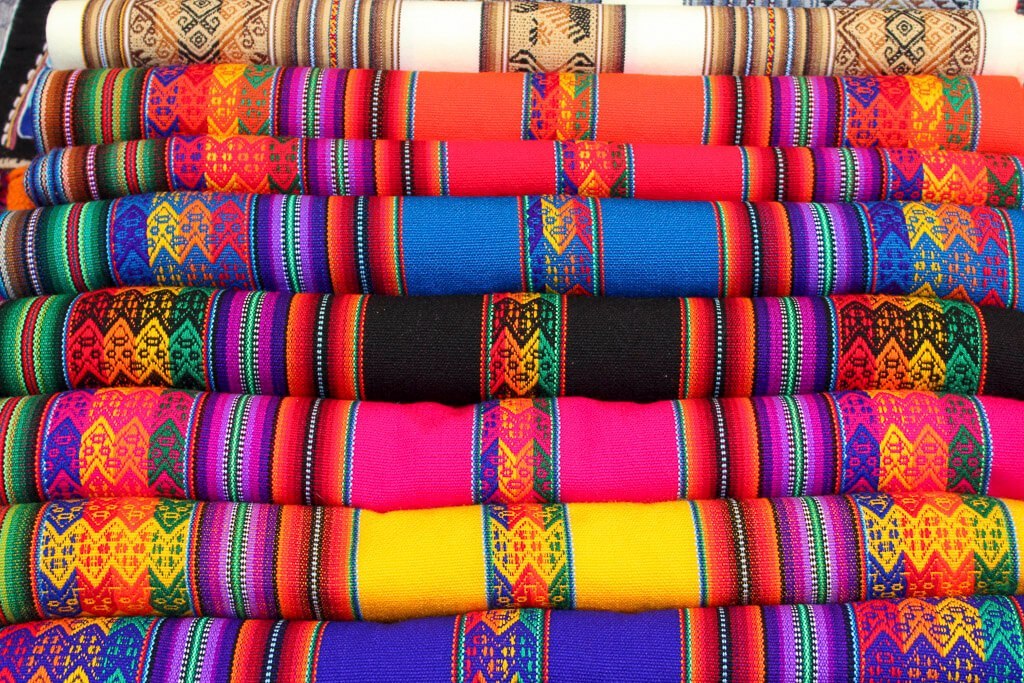
Founded by the Spanish Conquistador Viceroy Toledo, Pisac was built over an original Inca establishment and is one of the most famous markets in the Cusco region. Indigenous Quechua communities from the surrounding highlands gather for Sunday Market to sell their produce and stock up on supplies for the week.

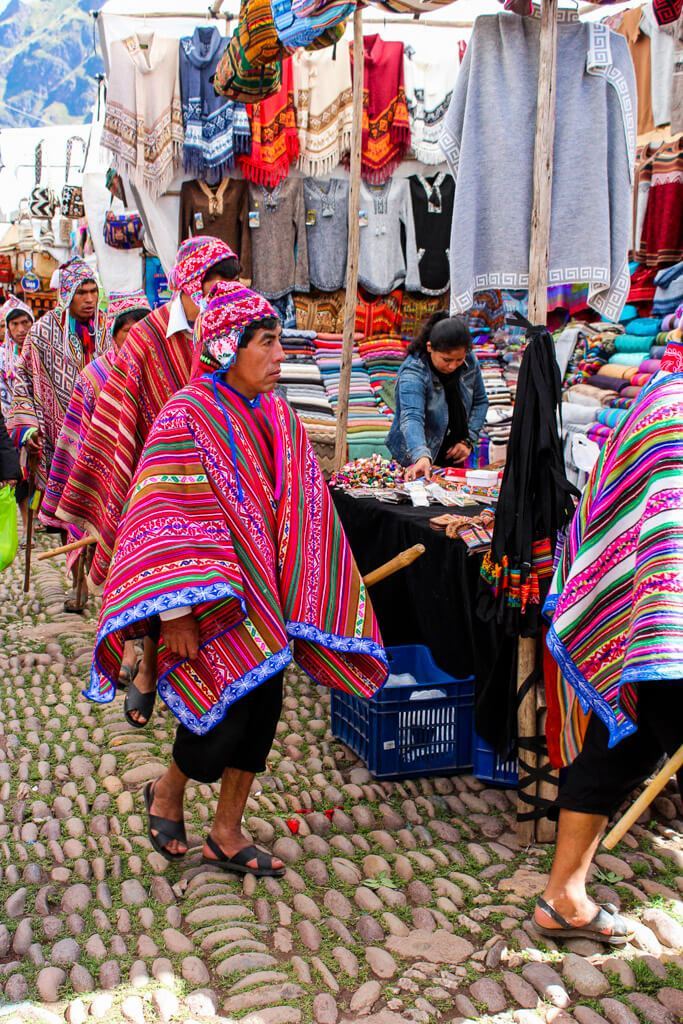
Shop for weavings, jewelry, alpaca clothing, ponchos, hats, carved wooden figures, ceramics, Andean instruments, and more. Find more unique products like brightly colored powder dyes, flowers, roasted cuy (guinea pig) as a delicacy, and more.
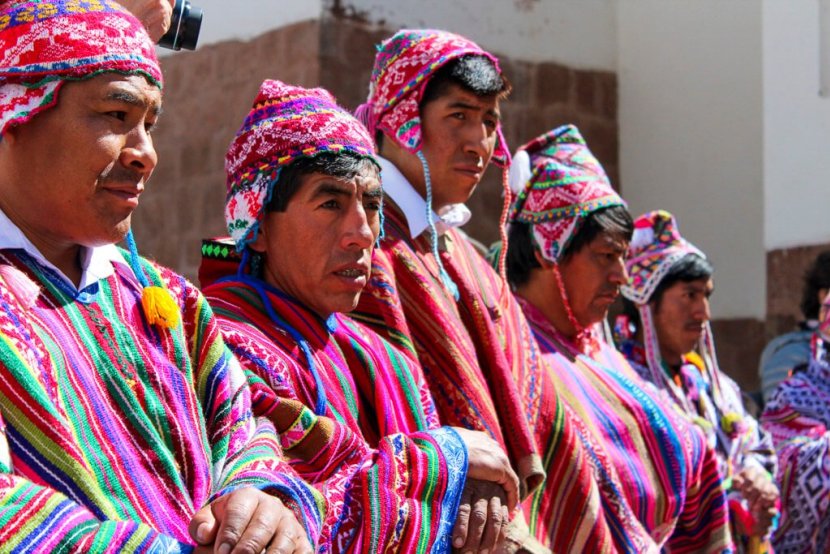
On Sunday, photograph Quechua Indians dressed in traditional hats and colorful clothing and observe the local mayors in red hats and brightly colored ponchos as they arrive at the church for mass.
The Blue Llama Cafe
The Blue Llama Café, located on the main square in Pisac, is an excellent place for lunch. Start with the Blue Llama Snack with quinoa, olives, and Andean cheese and corn and finish with the trout with black butter and caper sauce. We enjoyed a Peruvian cup of coffee.
The Pisac Ruins

The Pisac Ruins, located about twenty minutes above the town, are known for its agricultural terraces, temples, and military buildings. Walk around the Royal Sector of the site and enjoy spectacular views below of the Urubamba Valley.
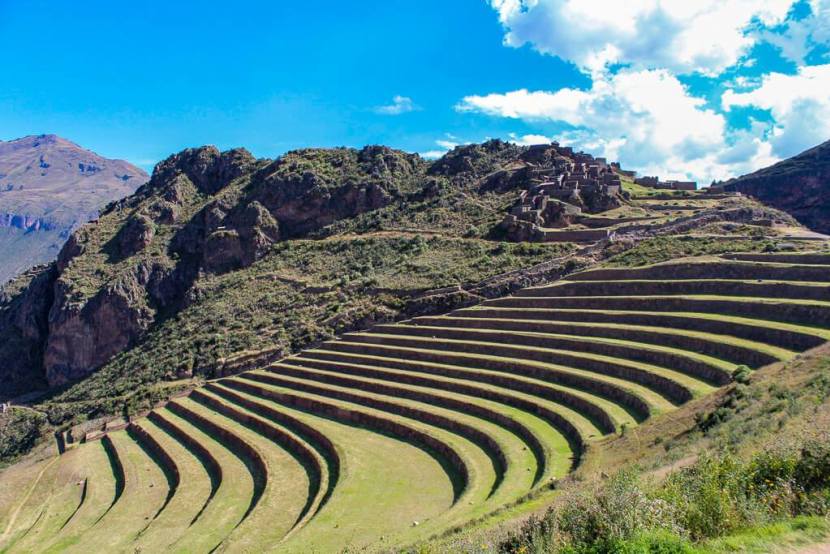
Ollantaytambo
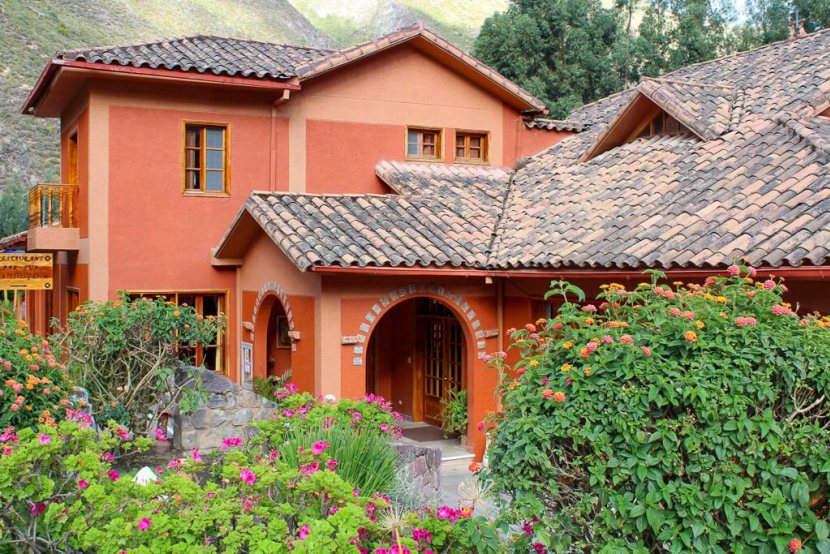
We ventured to the far side of the Sacred Valley past Urubamba to the Pakaritampu Hotel in Ollantaytambo. The restaurant in the hotel offers an excellent international menu and neuvo Andean native food like the Rolled Chicken with spinach, mixed vegetables, and quinoa risotto, or have a chicken and ham pizza with cheese and mushrooms.
You can reserve a room at the Hotel Pakaritampu now!
We explored the village of Ollantaytambo with lovely cobblestone streets and quaint cafes all flanked by Inca granite walls.
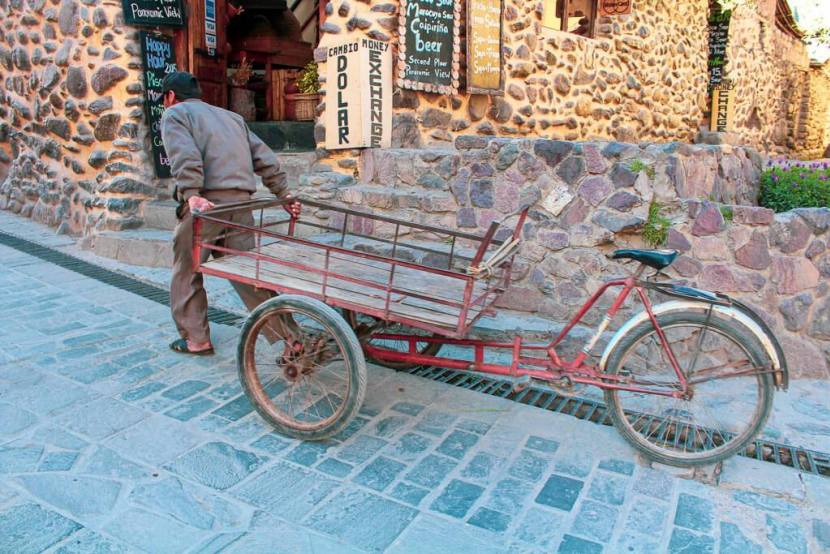
The terraced hillside Inca ruins of Ollantaytambo are some of the best stonework outside Machu Picchu, with the temple and fortress used as a royal residence by Emperor Pachacuti.
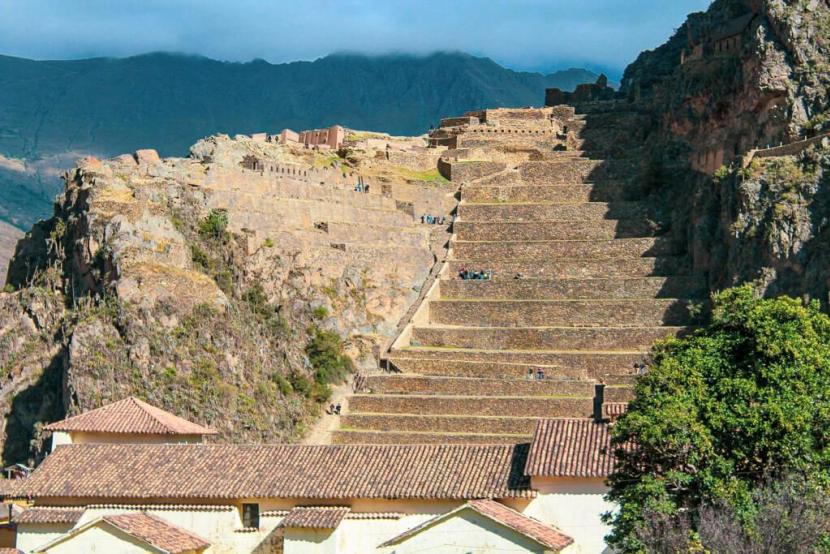
Here is the only place where Incas won a significant battle against the Spanish.
Train to Machu Picchu

Next, venture to the Ollanta Train Station and board the train to the UNESCO World Heritage Site Machu Picchu. This majestic work of Inca architecture and engineering, nestled between the sacred mountains, was built around the time of Emperor Pachacutec in the 15th century of the Inca expansion.
We rode the train along the Vilcanota River, also called the Urubamba River, to Aguas Calientes and the Machu Picchu Pueblo.
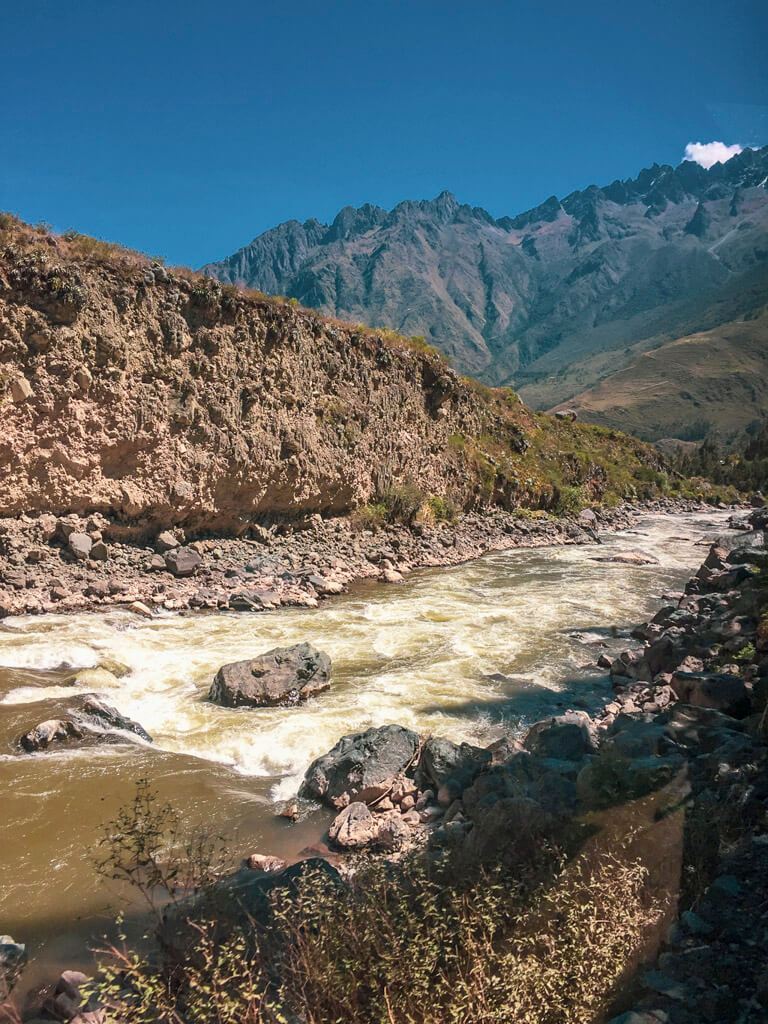
Trees that had fallen across the train tracks delayed our trip for over an hour as workers came from Machu Picchu Pueblo to cut the trees and remove them. When we arrived at the train station, we quickly checked our bags with the hotel porter.
Machu Picchu – Days 4-5

We had our passport and camera ready to board the bus up the dozen twists and turns up the mountain on the road to Machu Picchu, the “lost city of the Incas” discovered by Hiram Bingham in 1912. This palace complex of the ruler, Pachacuti Inca Yupanqui, served as a royal retreat.
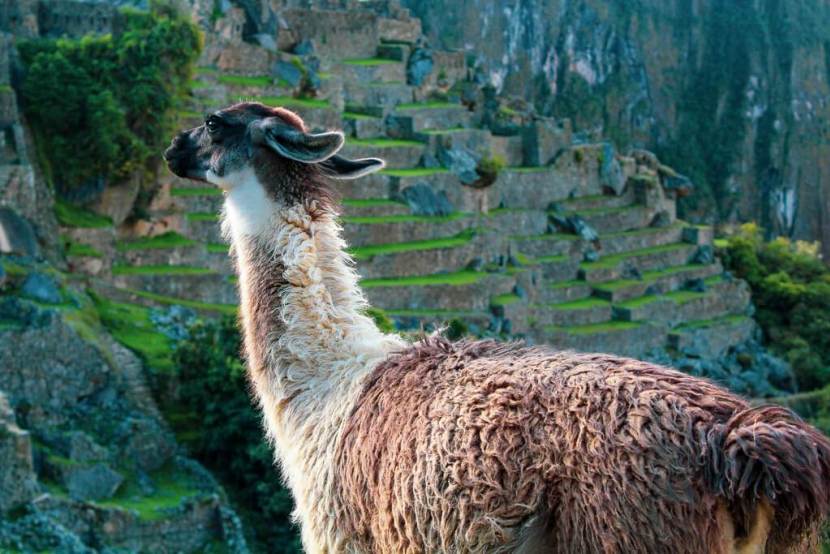
See the Temple of the Sun, the Acropolis, Temple of the Three Windows and the Hitching Post of the Sun. This road-train-bus trip is the conventional route to Machu Picchu.
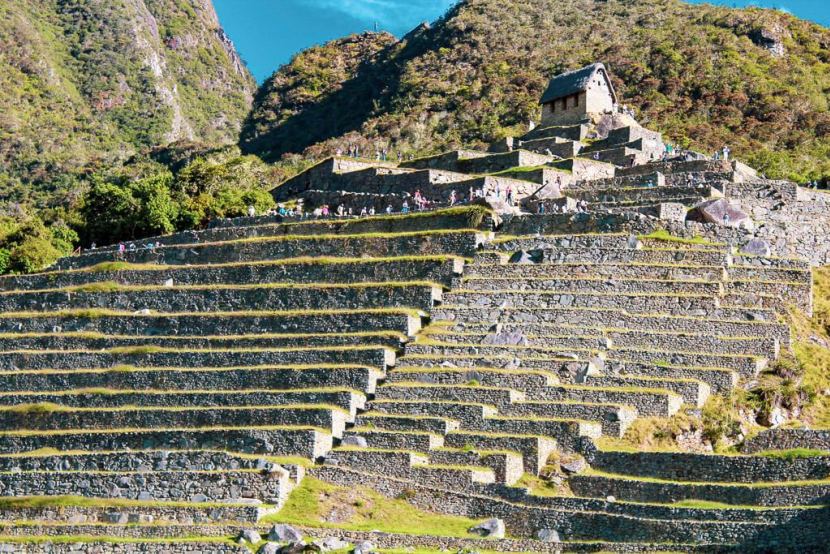
Trekking the Inca Trail from km 88 train stop to Machu Picchu is typically hiked in three to four days, with porters carrying your heavy backpack, across thousands of stone steps, numerous high retaining walls, tunnels traversing elevations from 8,530 to 13,780 feet, all lined with Inca ruins of various types and sizes. This route is not for the faint of heart or my husband with COPD.
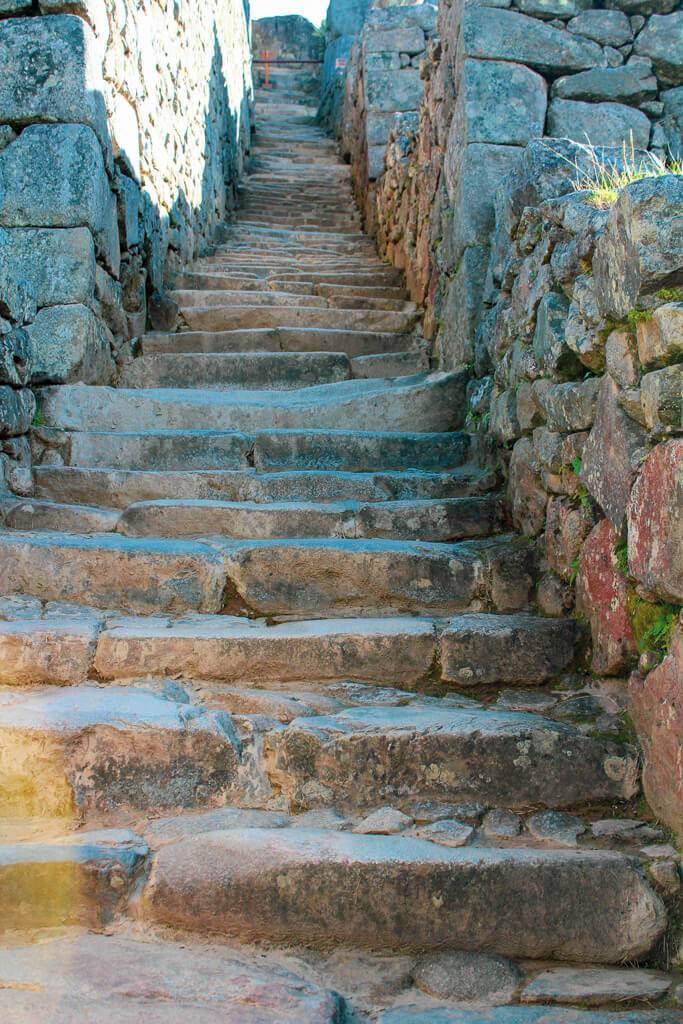
Andina Luxury Hotel
We went back to the hotel in the village, the Andina Luxury Hotel, after dinner at the Full House with Ceviche de Trucha and Alpaca a las Brazas. After setting our clocks for a 4:00 am wake up, the muffled roar of the Urubamba River lulled us to sleep.
You can see room photos and reserve your room at Andina Luxury Hotel right now!
Morning at Machu Pichu

We caught the 5:00 am bus again up the dozen twists and turns to the gate of the World Heritage Site and climbed the stone steps to that iconic view of the ancient ruins of Machu Picchu.

I must have stood there an hour, taking pictures, meditating, and letting the overwhelming experience of being there take my breath away. What a once-in-a-lifetime, bucket list trip. I was there at Machu Picchu!
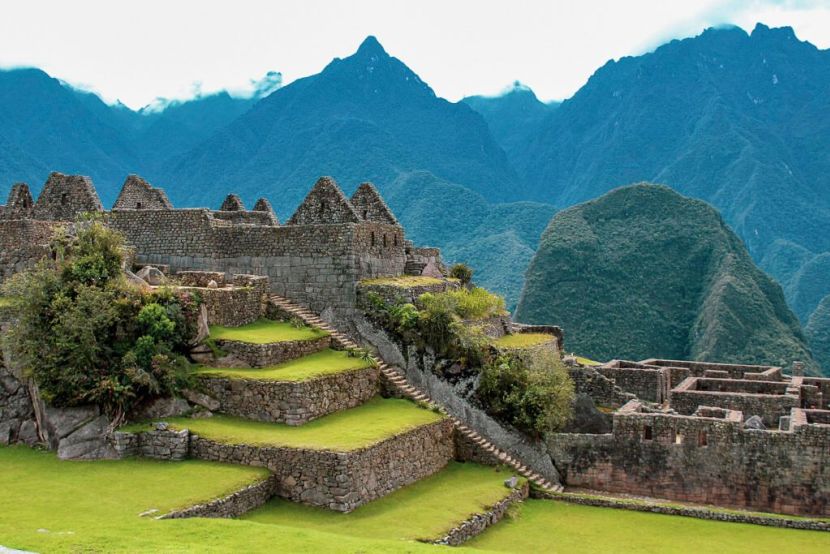
After we hiked down and toured through the ruins of Machu Picchu, we took the bus back around noon to the village and grabbed lunch at a small family-owned restaurant. We took the 2:30 train back to Ollentaytambo and caught our van back to the hotel in Cusco, arriving after dark.

If you can spare a blank page in your passport, get the one-of-a-kind Machu Picchu stamp at a small table at the exit by the bus line.
Day Trips from Cusco – Days 6-7
Chinchero
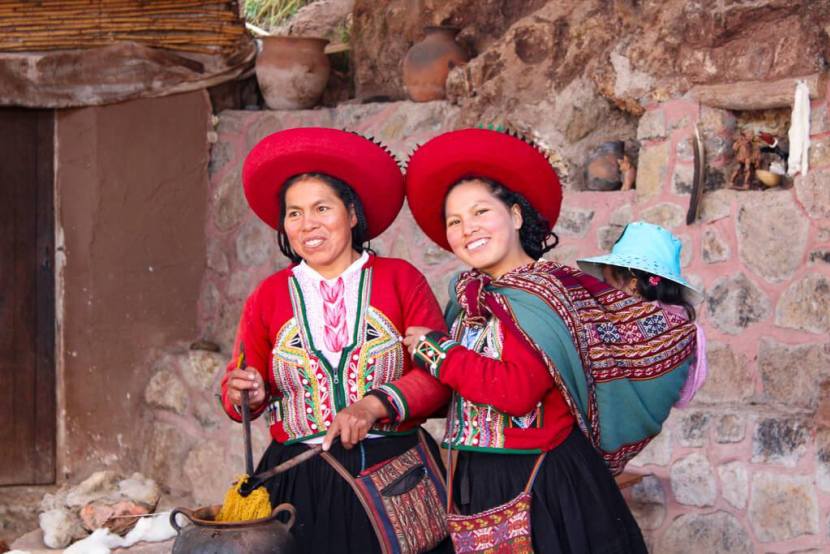
Travel to the village of Chinchero to see Quechua women demonstrate the art of weaving. Learn how the weavers prepare the baby alpaca wool through the dyeing and finishing process. Then take the opportunity to purchase the beautiful hand-made textiles, blankets, shawls, ponchos, sweaters, socks, gloves, hats, and more. They are some of the best you will find during your week in Peru!
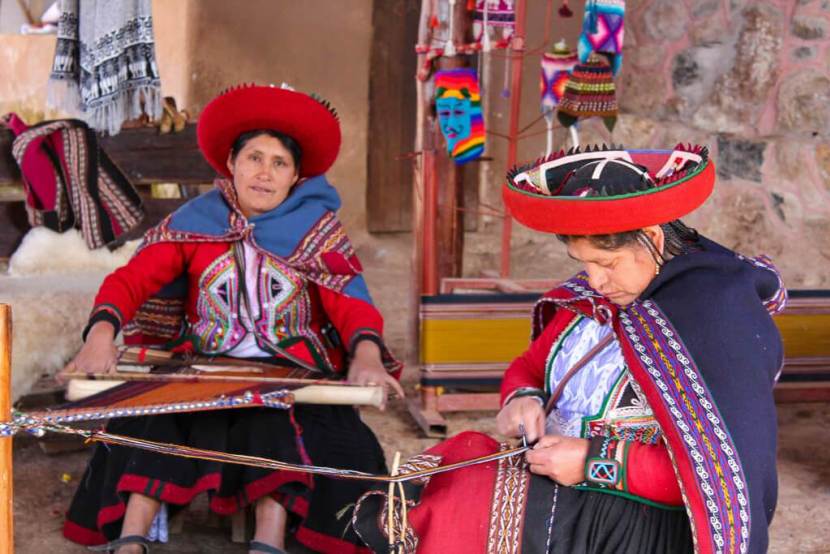
The emperor Tupa Inca chose Chinchero as his country estate home. Steep slopes, hidden springs, stone outcroppings, and glimpses of snow-covered mountains are part of the contrasts and surprises of the black Father Mountain.
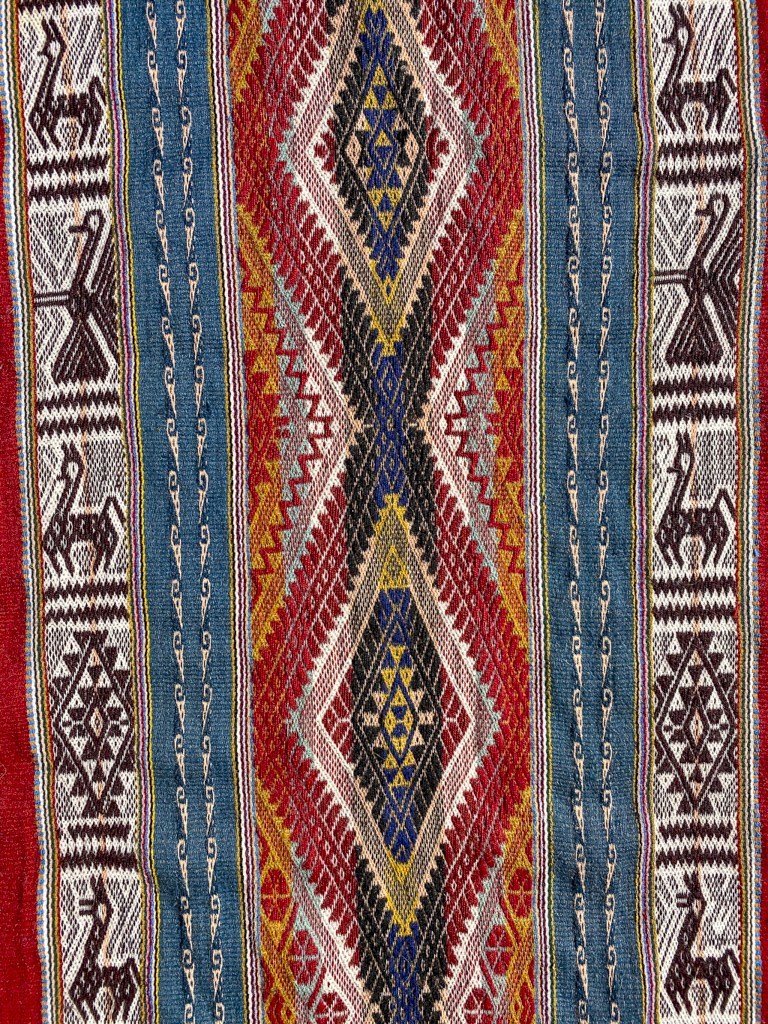
This beautiful hand-woven shawl by the Chinchero weaver is a product of the love for the Pachamama, Mother Earth. White represents the snow-covered Father mountains or the Apus. Pink on blue is the condor claw. The diamond is the southern cross constellation. The three parts to the southern cross constellation are the condor -cosmos, puma – this world, and the snake – the underground. Aqua is the natural springs; black is the Mother Earth. Red represents potatoes. There are woven condor figures and llamas.
Maras Salt Mines

Hidden deep within the Umbamba Valley, 25 miles north of Cusco, venture to the Maras Salt Mines. It is one of the different types of places to see in the Sacred Valley, and one that has been central to life in the Andes for centuries. It is well known for its thousands of evaporation salt ponds.
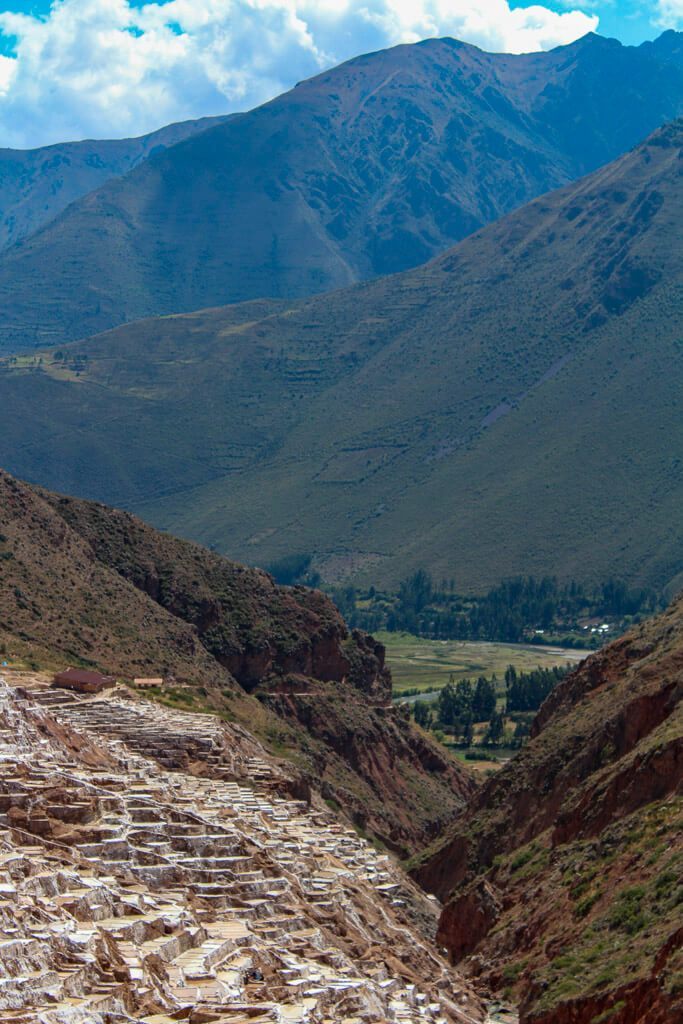
Since pre-Inca times, the salt is produced in Maras by the slowly evaporating mineral-rich water from natural underground streams in the salt ponds. A precious gem offered up by Mother Earth, the colors of the salt vary from white, pink, to light reddish or brownish tan.
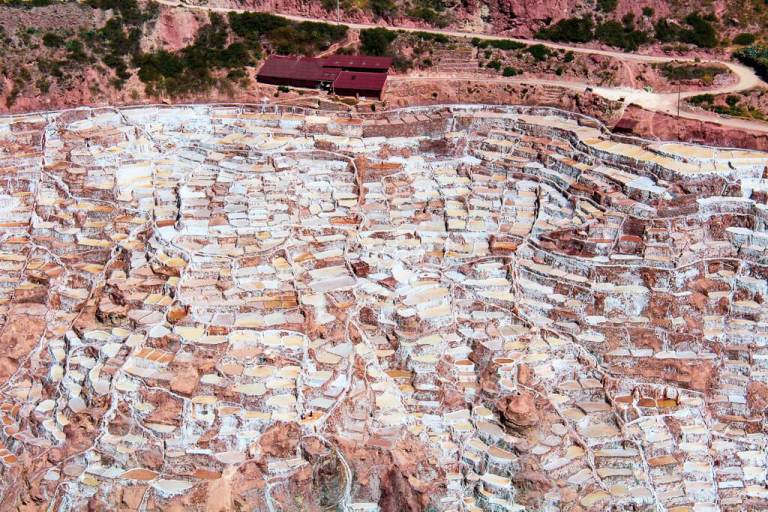
More about Peru and Incan Culture – the Quechua Language
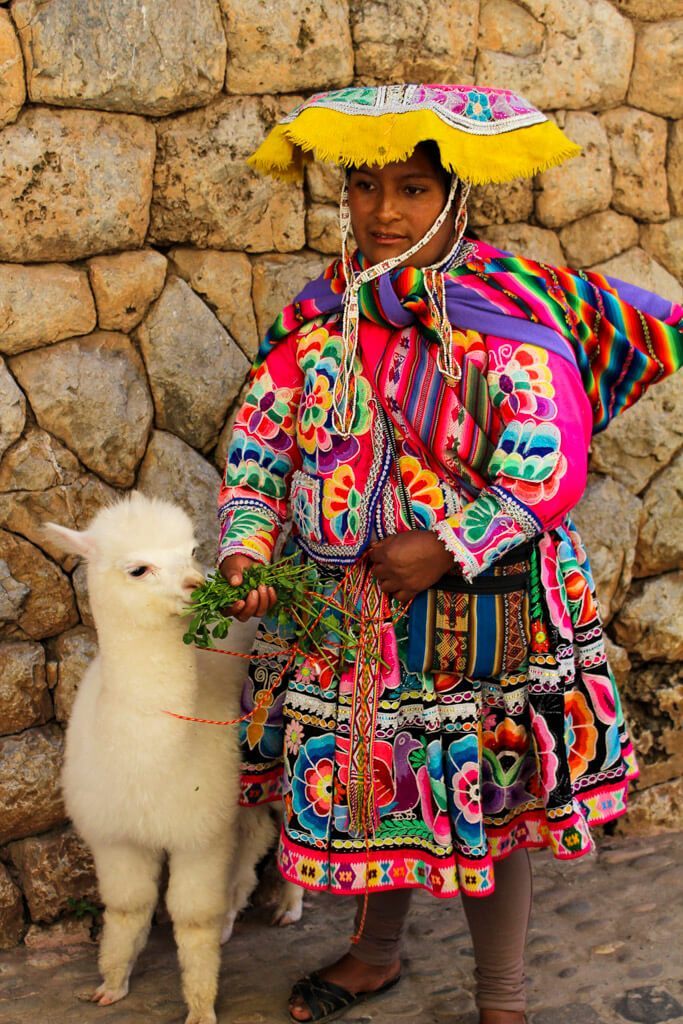
Children speak Quechua, the Inca language learned at home, and then they learn Spanish at school. Eight to ten million South Americans speak the Inca Quechua language.
I felt a spiritual connection to this Mother Earth, the Pachamama, absorbed in the ancestry, history, and culture of this life in the Inca Heartland of Peru.
This bucket-list trip was an adventure of a lifetime! Arrange a tour and go! Kipachi Peru Travel led our tour.
- Pro Tips:
- The best way to see Machu Picchu is to arrange a tour so that you have your reservations and tickets ahead of time.
- Tickets sell out during the high season, June to September.
- Our tour included an overnight stay in Aguas Calientes so that we could make two half-day trips to Machu Picchu, one in the afternoon and another early the next morning, thus, doubling our time at Machu Picchu.
- Tickets are about $63 each visit, allowing you to spend time early morning to noon or noon to sundown.
- The round-trip bus ride up the mountain is about $16.
- When you enter Machu Picchu, you must show the original passport you used at the time of ticket purchase.
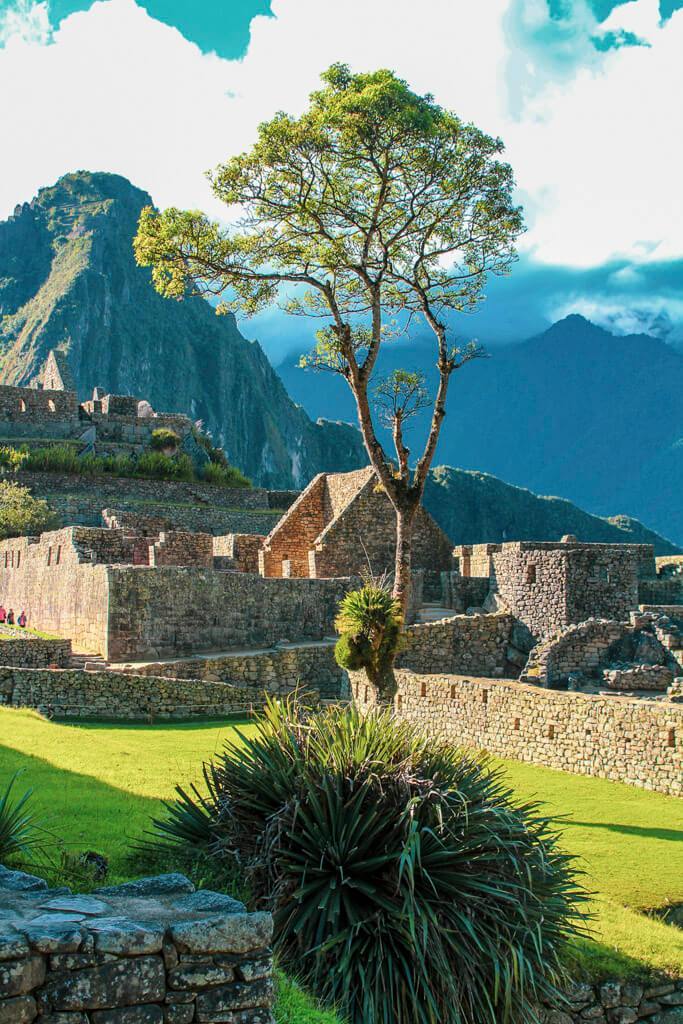
If I were to venture this trip again, I would arrange a Best of Peru tour with Belmond Luxury Tours that would include stays at the Belmond Hotels, a ride on the Belmond Hiram Bingham luxury train, and an overnight stay at the Belmond Sanctuary Lodge at the entrance to Machu Picchu.
Check out rooms at the Belmond Sanctuary Lodge right now!
- Pro Tips:
- You can purchase cans of oxygen at the pharmacy in Cusco, which helped my husband breathe better.
- We took prescription meds for altitude sickness, and it helped. (When you land in Cusco, you are at 11,200 feet elevation.) Take it slow and steady and breathe deeply. Hold off on alcohol for a couple of days until you acclimate.
- Bring travel packs of Kleenex as you’ll find toilet tissue in short supply in public restrooms.
- Bring an exfoliating bath sponge, as most hotels do not offer a washcloth.
Is it Time for a Week in Peru?
If Machu Pichu is on your bucket list, perhaps it is time to start planning your trip…. If you want to arrange a full tour, and save yourself all the trouble of planning, some of our affiliate companies offer some amazing options you may be interested in:
Trafalgar – Highlights of Peru
Trafalgar – In the Footsteps of the Incas
Tours4Fun – 7 Day Lima to Machu Pichu with Cusco and the Sacred Valley
Tours4Fun – 7 Day Peru, Lima, Sacred Valley and Cusco
If you want to plan your own trip, you may be interested in all of the other options available for planning:
Expedia – Machu Pichu Activites
Tripadvisor – Machu Pichu Options
Be the cool kid on the block! Pin it so everyone wants to go!
